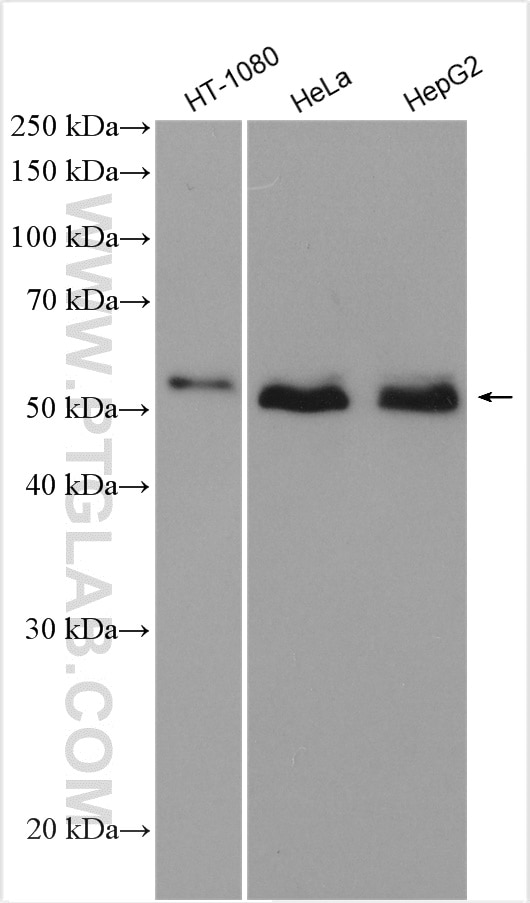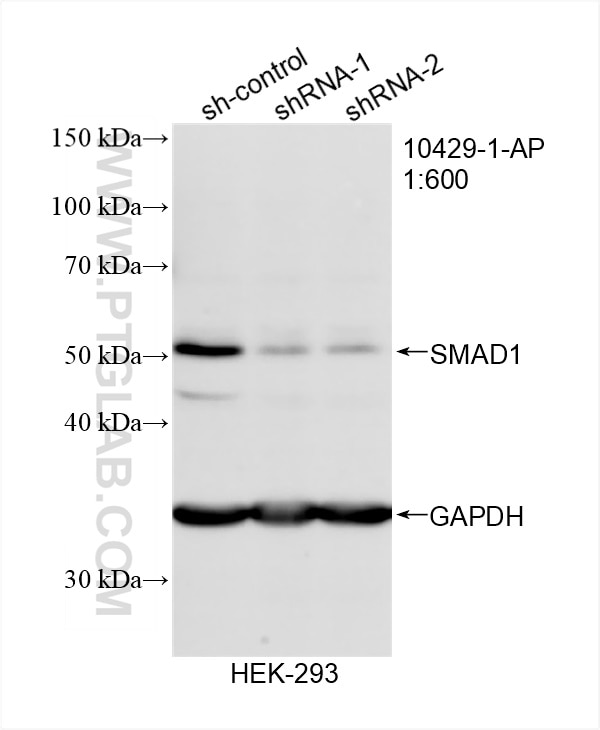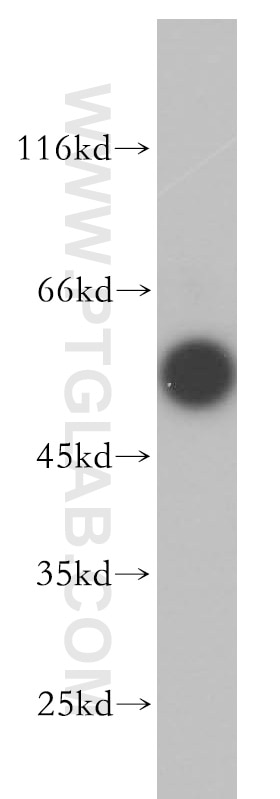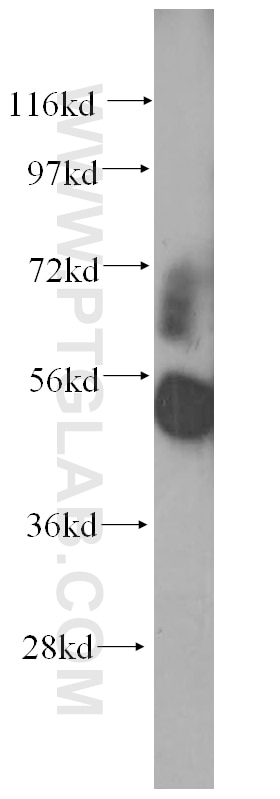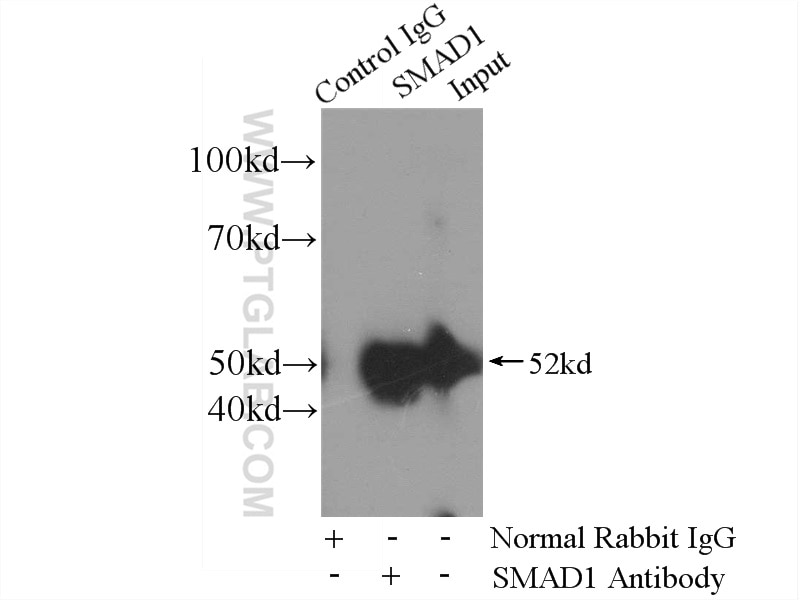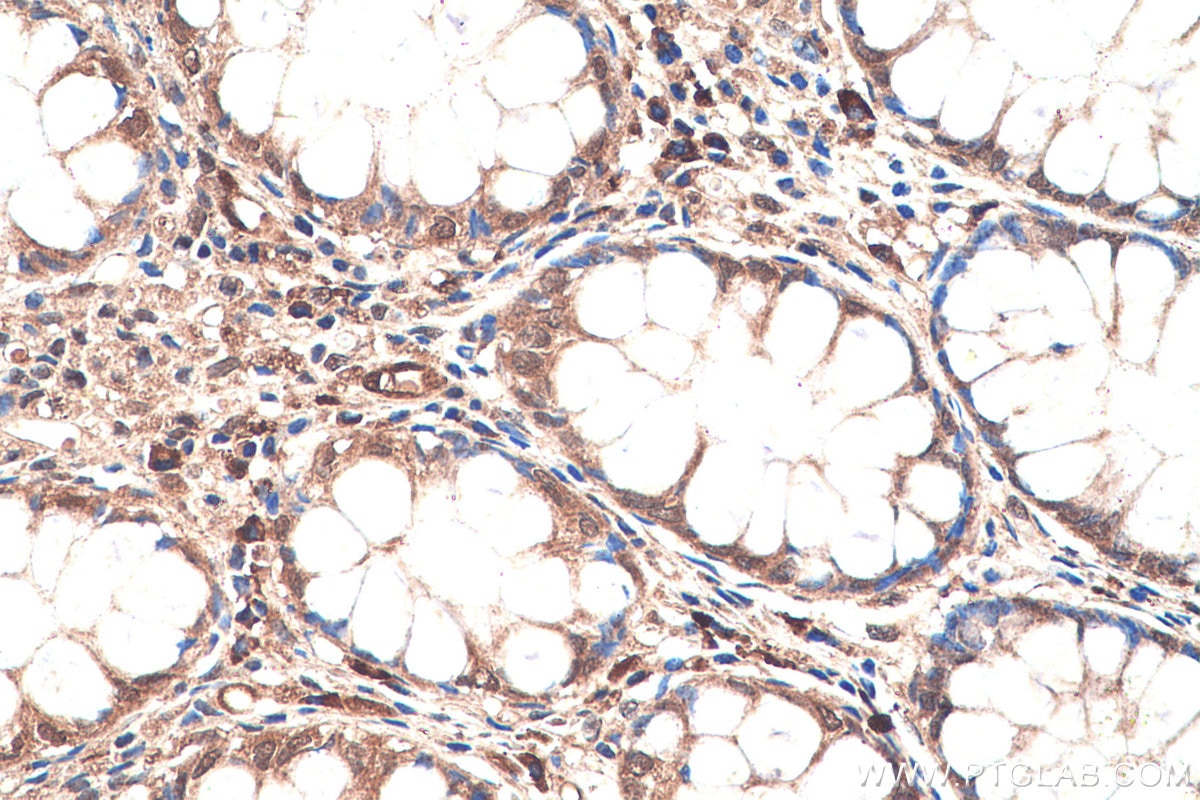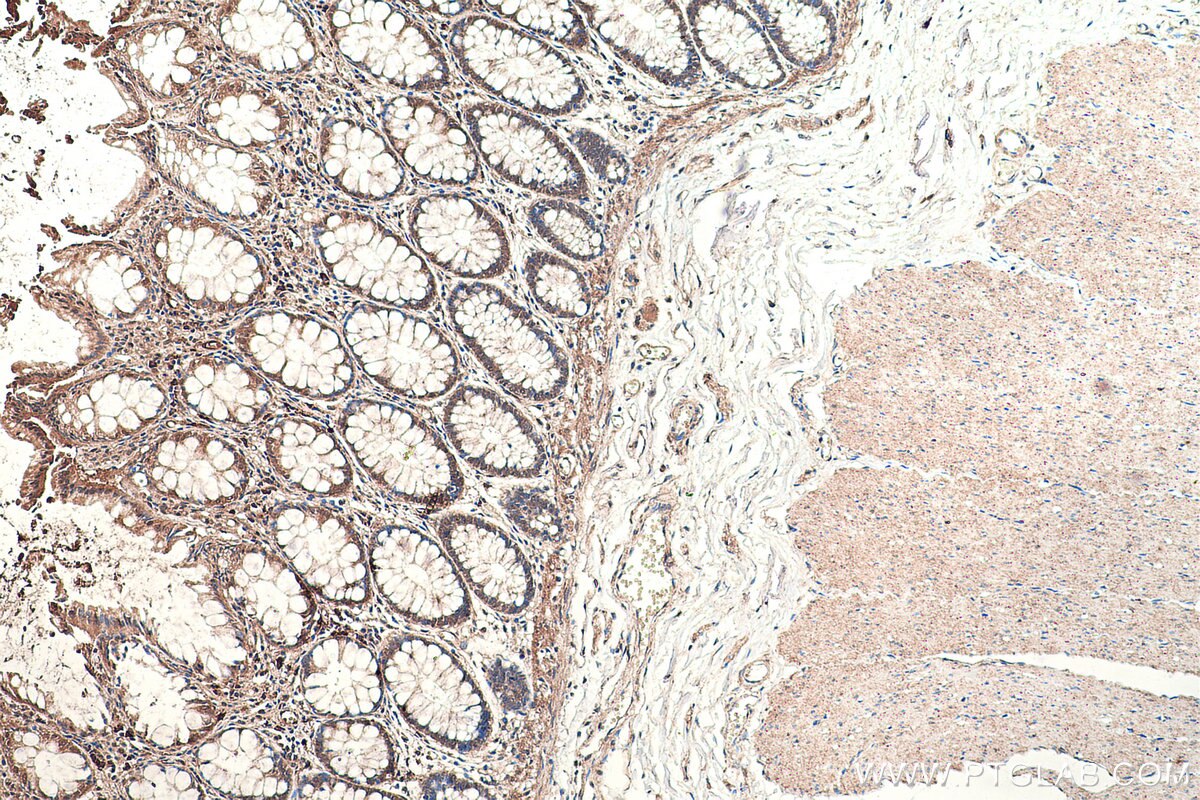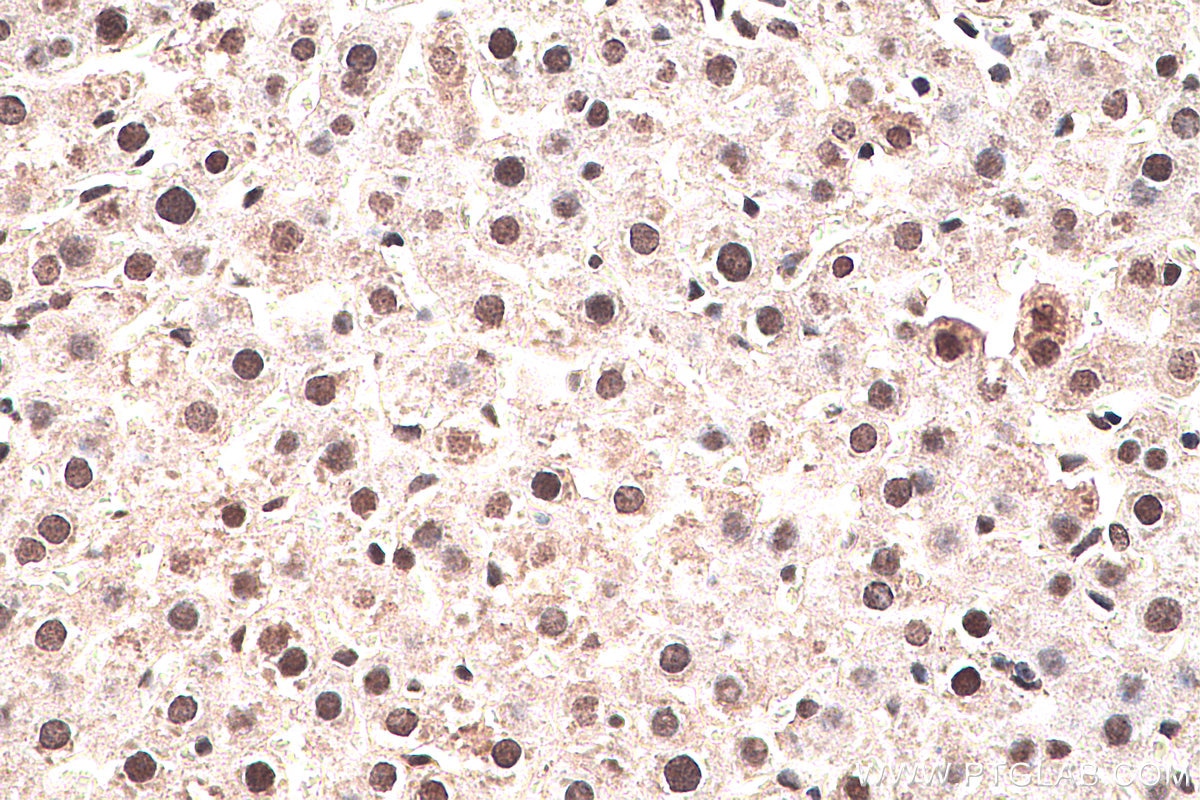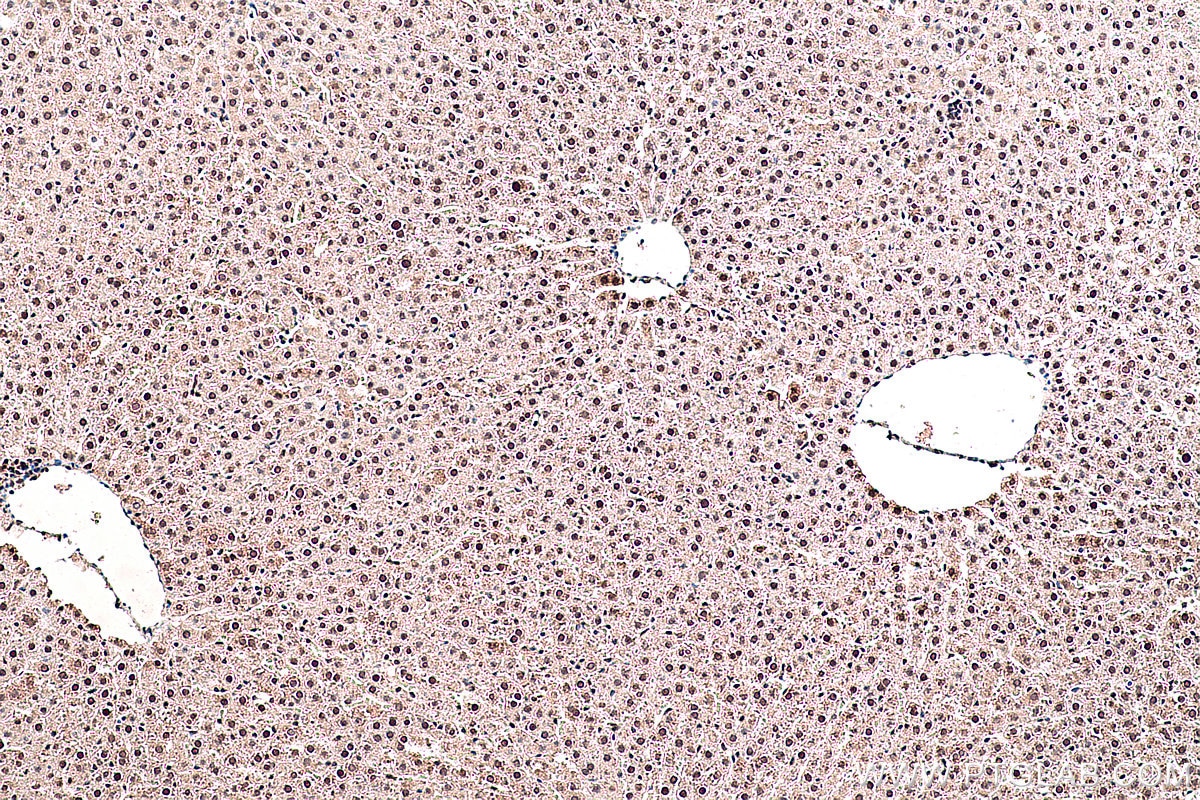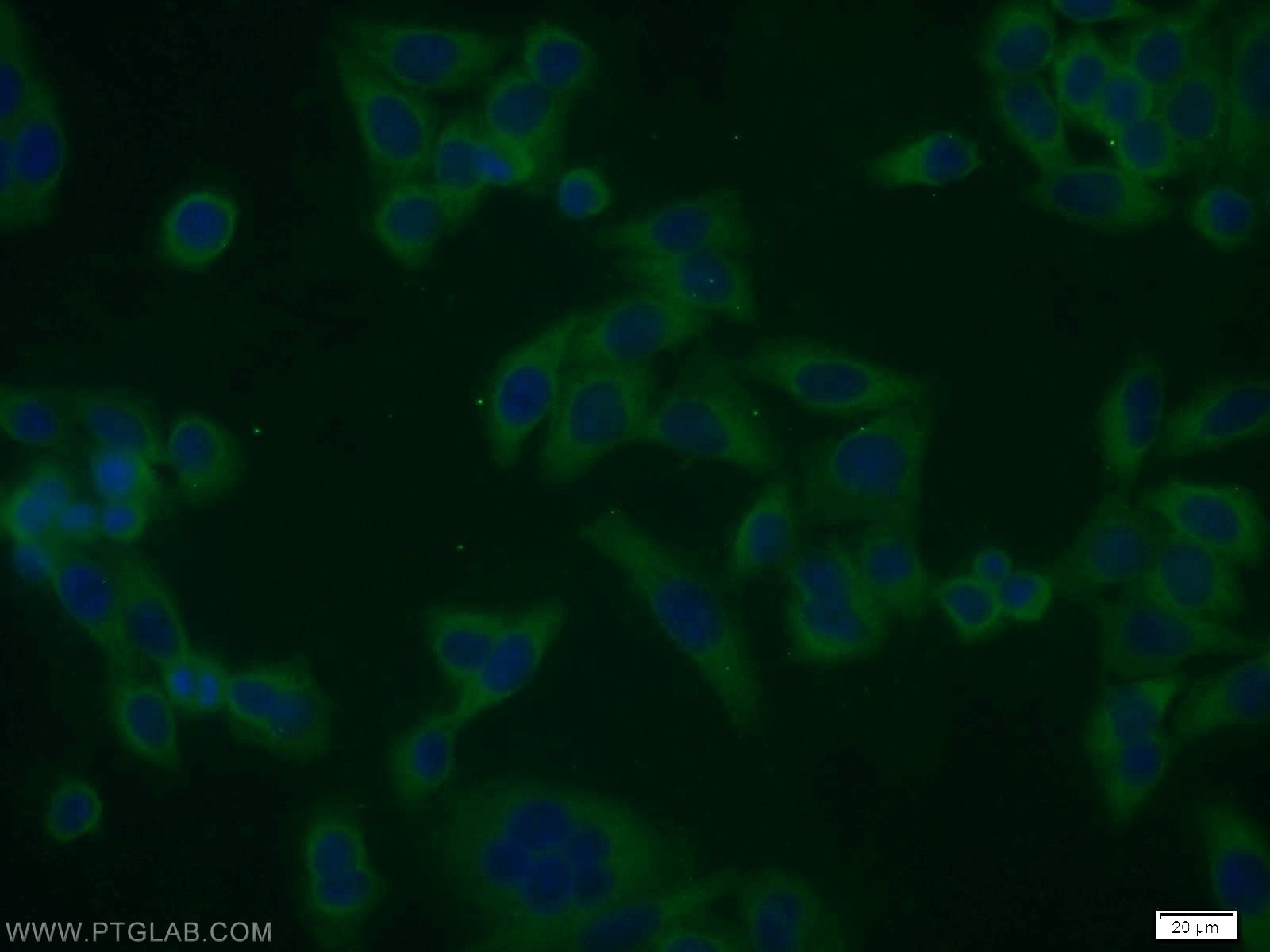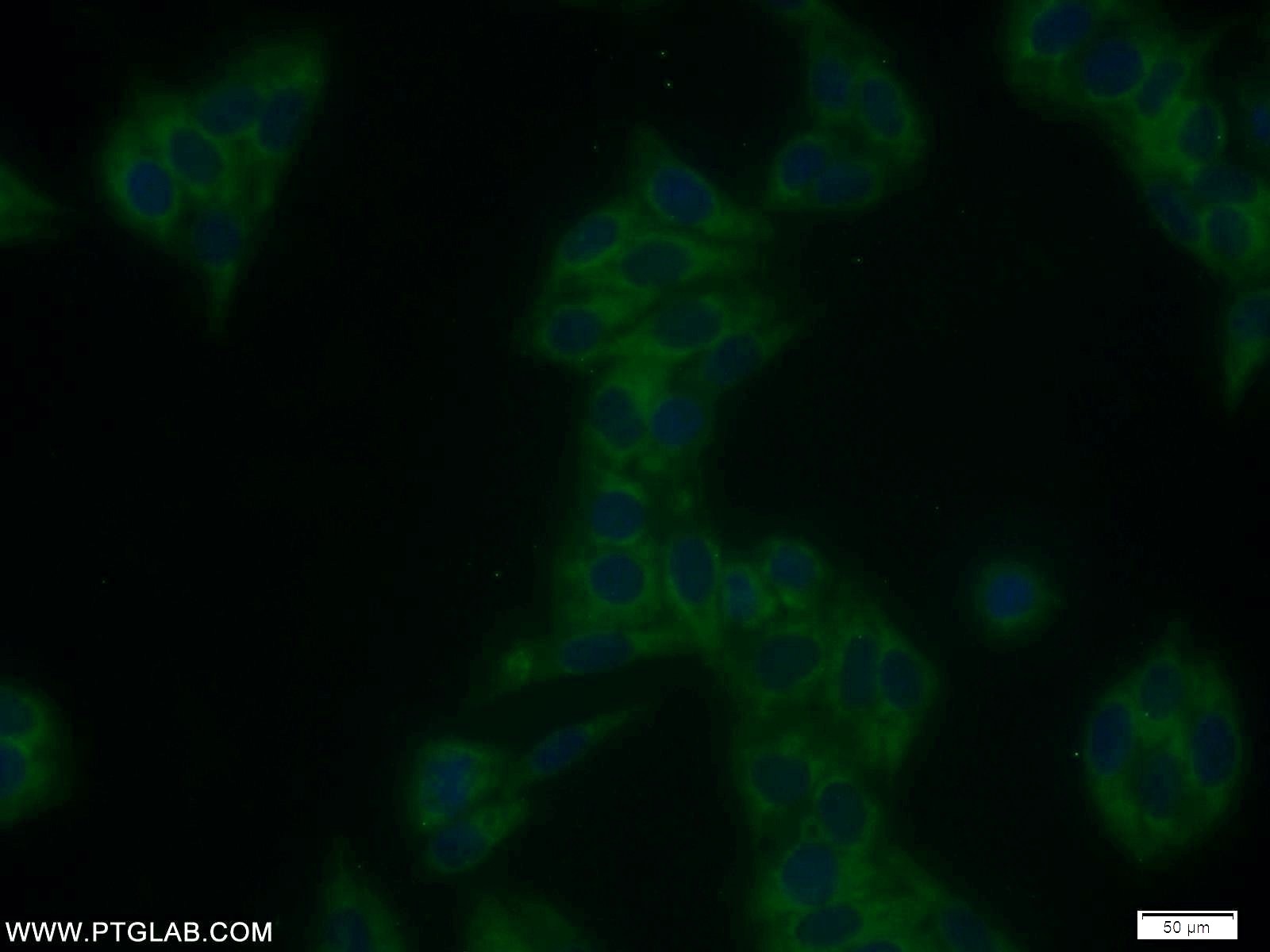Validation Data Gallery
Tested Applications
| Positive WB detected in | HT-1080 cells, HEK-293 cells, HepG2 cells, mouse heart tissue, HeLa cells |
| Positive IP detected in | mouse heart tissue |
| Positive IHC detected in | human colon tissue, rat liver tissue Note: suggested antigen retrieval with TE buffer pH 9.0; (*) Alternatively, antigen retrieval may be performed with citrate buffer pH 6.0 |
| Positive IF/ICC detected in | HeLa cells, HepG2 cells |
Recommended dilution
| Application | Dilution |
|---|---|
| Western Blot (WB) | WB : 1:1000-1:8000 |
| Immunoprecipitation (IP) | IP : 0.5-4.0 ug for 1.0-3.0 mg of total protein lysate |
| Immunohistochemistry (IHC) | IHC : 1:500-1:2000 |
| Immunofluorescence (IF)/ICC | IF/ICC : 1:10-1:100 |
| It is recommended that this reagent should be titrated in each testing system to obtain optimal results. | |
| Sample-dependent, Check data in validation data gallery. | |
Published Applications
| WB | See 29 publications below |
Product Information
10429-1-AP targets SMAD1 in WB, IHC, IF/ICC, IP, ELISA applications and shows reactivity with human, mouse, rat samples.
| Tested Reactivity | human, mouse, rat |
| Cited Reactivity | human, mouse, rat |
| Host / Isotype | Rabbit / IgG |
| Class | Polyclonal |
| Type | Antibody |
| Immunogen | SMAD1 fusion protein Ag0701 相同性解析による交差性が予測される生物種 |
| Full Name | SMAD family member 1 |
| Calculated molecular weight | 52 kDa |
| Observed molecular weight | 52 kDa |
| GenBank accession number | BC001878 |
| Gene Symbol | SMAD1 |
| Gene ID (NCBI) | 4086 |
| RRID | AB_2247334 |
| Conjugate | Unconjugated |
| Form | Liquid |
| Purification Method | Antigen affinity purification |
| UNIPROT ID | Q15797 |
| Storage Buffer | PBS with 0.02% sodium azide and 50% glycerol |
| Storage Conditions | Store at -20°C. Stable for one year after shipment. Aliquoting is unnecessary for -20oC storage. |
Background Information
Transforming growth factor-β (TGF-β) superfamily is recognized as one of the largest families of secreted multifunctional peptides exerting different biological effects on a large variety of cell types, such as regulation of hormone secretion, stimulation of extracellular matrix formation, the inhibition of proliferation of many cell types, cell survival, bone formation, and chemotaxis for inflammatory cells. One of the most important proteins that modulate TGF-β ligand activity is the SMAD family proteins. SMAD1 is one of the receptor-activated Smads. It's also a signal transducers of BMP signaling and binds to several proteins involved in ubiquitin-proteasome system (UPS). Transcriptional modulator activated by BMP (bone morphogenetic proteins) type 1 receptor kinase
Protocols
| Product Specific Protocols | |
|---|---|
| WB protocol for SMAD1 antibody 10429-1-AP | Download protocol |
| IHC protocol for SMAD1 antibody 10429-1-AP | Download protocol |
| IF protocol for SMAD1 antibody 10429-1-AP | Download protocol |
| IP protocol for SMAD1 antibody 10429-1-AP | Download protocol |
| Standard Protocols | |
|---|---|
| Click here to view our Standard Protocols |
Publications
| Species | Application | Title |
|---|---|---|
Carbohydr Polym In vitro and in silico anti-osteoporosis activities and underlying mechanisms of a fructan, ABW90-1, from Achyranthes bidentate. | ||
Cell Death Discov TAZ promotes osteogenic differentiation of mesenchymal stem cells line C3H10T1/2, murine multi-lineage cells lines C2C12, and MEFs induced by BMP9 | ||
Front Immunol Silencing SOCS3 Markedly Deteriorates Spondyloarthritis in Mice Induced by Minicircle DNA Expressing IL23. | ||
Front Mol Neurosci Tcf4 Controls Neuronal Migration of the Cerebral Cortex through Regulation of Bmp7. | ||
IUBMB Life LncRNA RP11-301G19.1 is required for the maintenance of vascular smooth muscle cell contractile phenotype via sponging miR-17-5P/ATOH8 axis | ||
Ecotoxicol Environ Saf Exosomal miR-125a-5p derived from silica-exposed macrophages induces fibroblast transdifferentiation. |
